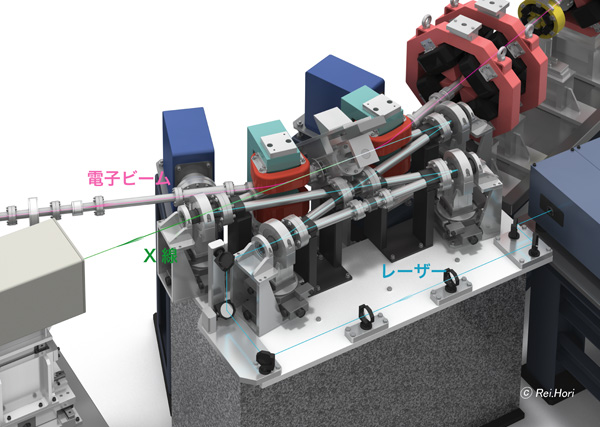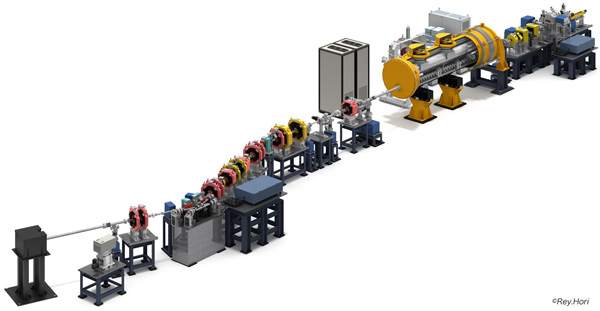Topics
Successful X-ray Generation using Inverse Compton Scattering with SCRF Technology Confirmed at STF
April 4, 2013
On March 15, scientists working on the Quantum Beam Technology Program at KEK’s superconducting RF test facility (STF) confirmed the successful generation of X-rays using Inverse Compton Scattering (ICS) with superconducting radiofrequency (SCRF) acceleration technology. This is the world’s first successful implementation of ICS X-ray sources with SCRF technology.
The Quantum Beam Technology Program is a 5-year program supported by the Ministry of Education, Culture, Sports, Science, and Technology. The name, Quantum Beam, refers to beams of particles such as neutrons, photons, and ions. Quantum mechanics has a broad influence on our everyday lives. For example, without quantum mechanics there would be no transistors, and consequently, no personal computers. In addition, if there were no laser which also relies on quantum principles, no Blu-ray players would exist. This program takes advantage of the quantum mechanical nature of the particles, and aims to develop a compact and high-quality particle source for broad and practical applications in medicine, life sciences, information technology, nanotechnology, and quantum science.
When a moving electron collides with a soft photon, the recoiling photon gains energy by transfer from the incoming electron. This process, called inverse Compton scattering (ICS), occurs in many astronomical environments that produce high energy X-rays or gamma rays. At this program, accelerated electrons collide with a laser using a novel technology called a four-mirror optical cavity that circulates laser pulses and amplifies its resonance.
ICS is widely recognized as a promising approach to achieve high-intensity high-quality X-rays, which might offer unique capabilities in a wide range of research fields, such as post-genome, nano-technology, or structural analysis at the atomic level. Progressive advancements in these research areas will lead to various applications in the industrial, medical, and security-related fields. The practical implementation of ICS sources, however, depends on the ability to achieve the high peak brightness of the X-rays. The key technology required to realize this brightness is superconducting RF (SCRF) accelerating technology.
SCRF cavities are capable of producing a higher accelerating gradient, or, a greater acceleration in the same amount of length, thereby enabling a significant downsizing of the accelerator so that it would fit in an average hospital or laboratory room. These cavities are also more energy efficient, as they conduct electric current with almost no loss of energy.
KEK has made notable contributions to the SCRF technology research and development (R&D) for the International Linear Collider (ILC), which is a planned, next-generation electron-positron linear collider. This successful X-ray generation is an example of a spin-off effect of the ILC R&D, even before the realization of the project.
Terminology
Four-mirror optical cavity by combining four mirrors to have two optical axes crossing in the center (see figure for the detailed layout), a cavity-like structure can be formed in which an injected laser pulse can be stored. This four-mirror optical cavity has a high stability even when its waist size is squeezed to facilitate the collision with an electron beam. When a four-mirror optical cavity is introduced to a head-on collision with an inverse Compton scattering electron, high brightness X-rays can be generated because of the cavity’s capability of high power laser accumulation with high stability.

Illustration of the four-mirror optical cavity with laser axis (blue lines). An electron beam comes in from the right to the left (pink lines), and collides head-on with the laser beam inside of the four-mirror optical cavity. The generated X-rays leave to the left (green line).

Illustration of the superconducting accelerator (right hand side), the beam line for squeezing its transverse size (middle), and the X-ray generation section (left hand side) that operates through the collision of the accumulated laser power in the four-mirror